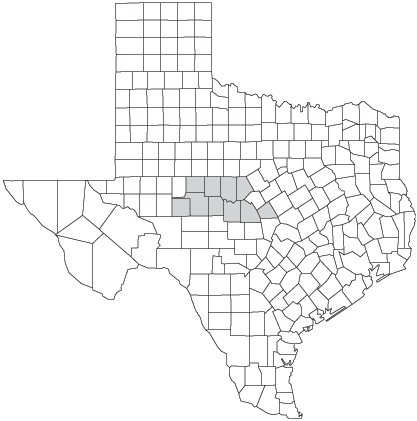Concho Water Snake (Nerodia paucimaculata)
- U.S. Status
- Threatened, Listed 9/03/1986
- Description
- The Concho water snake is a small snake that grows up to 3 feet in length. It has large dark reddish brown bands covering its body.
- Life History
- Concho water snakes are active from March through October. In the heat of summer, the snakes are active primarily in the early morning and evening. These snakes hibernate during the winter in areas such as crayfish burrows, rock ledges, debris piles, and concrete low water crossings. The snakes catch prey by remaining stationary near fish concentrations or by actively searching under and around rocks in riffles. Natural predators of the Concho water snake include king snakes, coachwhips, racers, raccoons, herons, hawks, and owls.
Minnows (red shiners and bullhead minnows), mosquitofish, channel and flathead catfish, gizzard shad, and sunfish make up the bulk of its diet. Its lifespan is 4 to 5 years. Females usually lay about 10 eggs per litter. The baby snakes hatch from late July through September.
Concho water snakes can live in reservoirs with suitable shoreline habitat, but juveniles don't grow as fast or as big since reservoirs do not provide riffle habitat (and an abundant source of food), which is best for young snakes. - Habitat
- The Concho water snake lives in free-flowing streams over rocks and shallow riffles, using rock debris and crevices for cover
- Distribution
 In Texas, this snake is found in the Concho and Colorado River basins of the Rolling Plains.
In Texas, this snake is found in the Concho and Colorado River basins of the Rolling Plains. - Other
- Habitat loss has been the reason for the snake's decline. Reservoir construction has flooded many miles of former stream habitat above the dams. The dams restrict streamflow and prevent floodwaters from scouring the streambeds. This has resulted in siltation of rocky streambeds, encroaching vegetation, and loss of riffle habitat required by young snakes. Today, efforts are being made to restore stream habitat and manage water flows to maintain habitat for the Concho Water Snake. The snakes have colonized artificial riffles that have been built to offset loss of natural habitat.